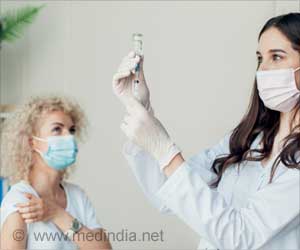Postmenopausal hormone therapy is stopped by some women before getting their breasts screened for cancer with mammography
Postmenopausal hormone therapy is stopped by some women before getting their breasts screened for cancer with mammography.
They hope to lower their risk of being called back afterward for unnecessary extra breast imaging. But taking a short break from hormones doesn't actually work for this purpose, according to the first large-scale randomized controlled trial to address the question. The READ (Radiological Evaluation and Breast Density) trial of more than 1,700 Group Health women is in the June 2, 2009 Annals of Internal Medicine."Postmenopausal hormones make breasts denser—like young women's breasts—and make mammograms harder to 'read,'" explained Diana S.M. Buist, PhD, MPH, an associate investigator at Group Health Center for Health Studies in Seattle. This raises the chance of having a "false-positive." That means women are called back ("recalled") for more testing, only to learn they have no breast cancer after all.
"False-positives account for a quarter of the overall costs of mammography in the United States," Buist said. Previous evidence showed stopping hormones could improve mammography, which led some clinicians to suggest stopping briefly before a mammogram. But there was no evidence of how long women needed to stay off hormones for their mammograms to improve. "We thought it was important to see if stopping hormones for one or two months really did make any difference in clinical outcomes," she said. "And we also wanted to make sure that it didn't cause any harm."
It didn't work in practice, according to the READ trial. The trial's three groups did not differ significantly in what proportion was called back for more tests after screening mammography. Of the women (aged 45-80) who stayed on hormone therapy, 11.3% were called back for more tests, compared to 12.3% and 9.8%, respectively, of those who stayed off hormones for one or two months. Taking a break from hormone therapy was not without harm: increasing the women's menopause symptoms. But there was also some benefit—making their breasts slightly less dense.
What does breast density mean? Breast tissue is composed mainly of milk glands and fat. A breast is dense if it consists of more milk glands than fat. Dense breast tissue, like milk glands, is denser and looks white on an X-ray, making tumors harder to see. That's why any tumors are harder to detect on mammograms of denser breasts than on those of less dense breasts. Breast density tends to decline with age, but individual women differ in the density of their breasts. Aside from age, having dense breasts is the biggest risk factor for breast cancer.
"We really hoped to find that a brief break in hormone therapy would lower false-positives and remove unnecessary costs and anxiety by improving mammography," Buist said. "And we were disappointed to find that it didn't. But we'll keep trying to find ways to reduce recall rates for women—in hopes of making mammography more effective and ensuring women have to go through the least amount of testing and radiation that's necessary."
Advertisement
"This study does not change our clinical message to doctors or patients about hormone therapy," said Buist.
Advertisement
Source-Eurekalert
RAS












